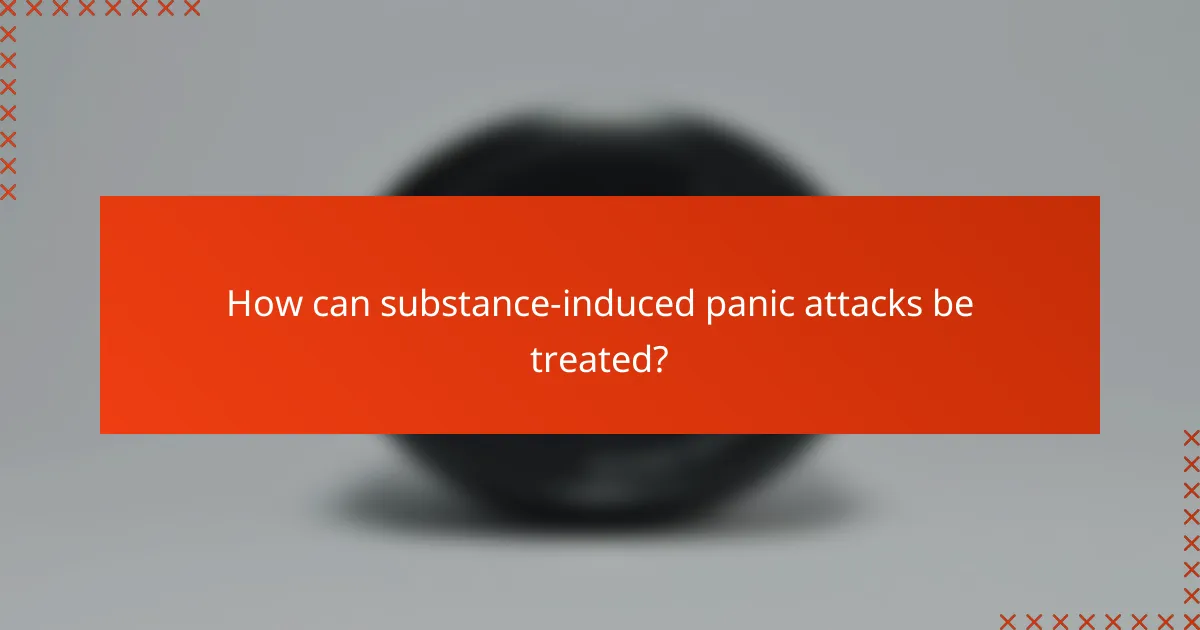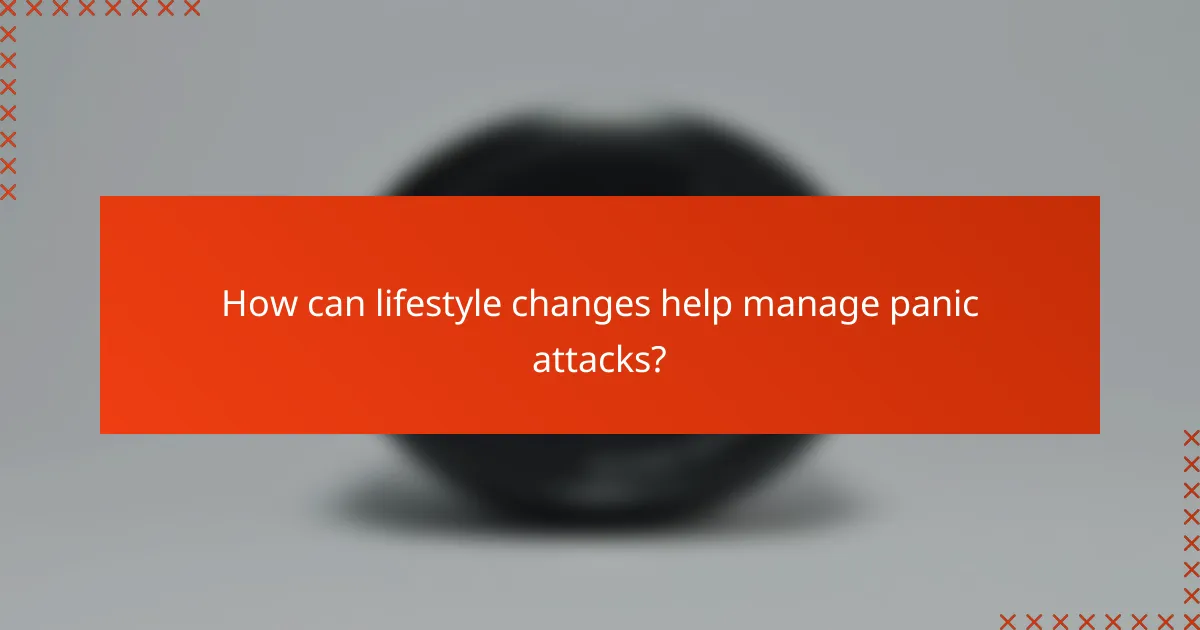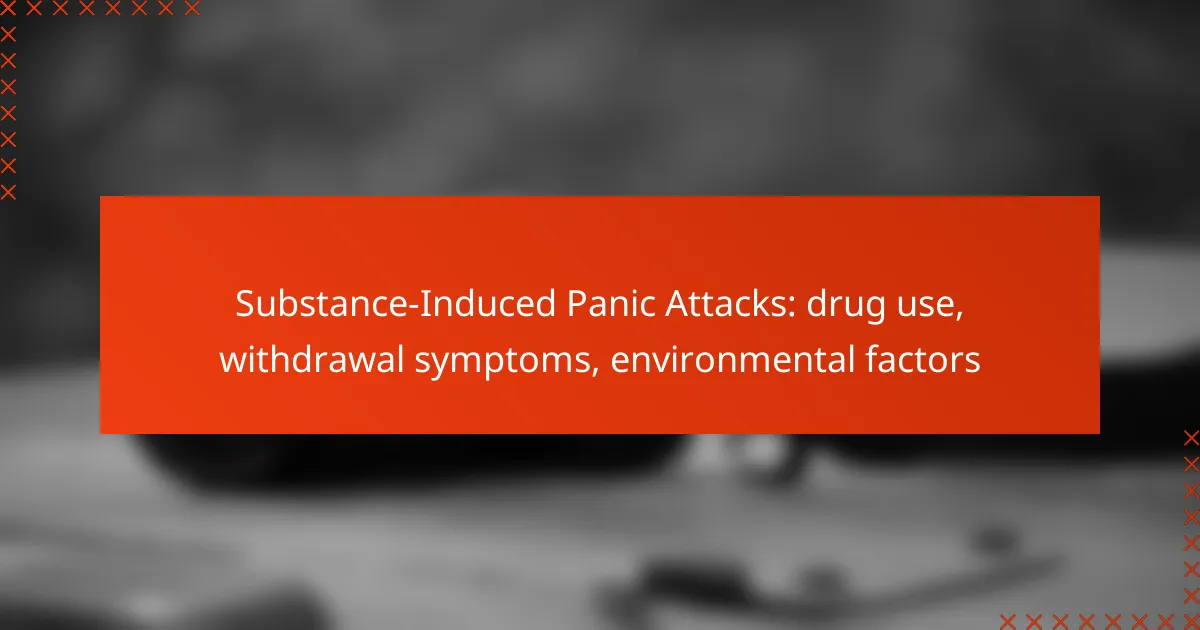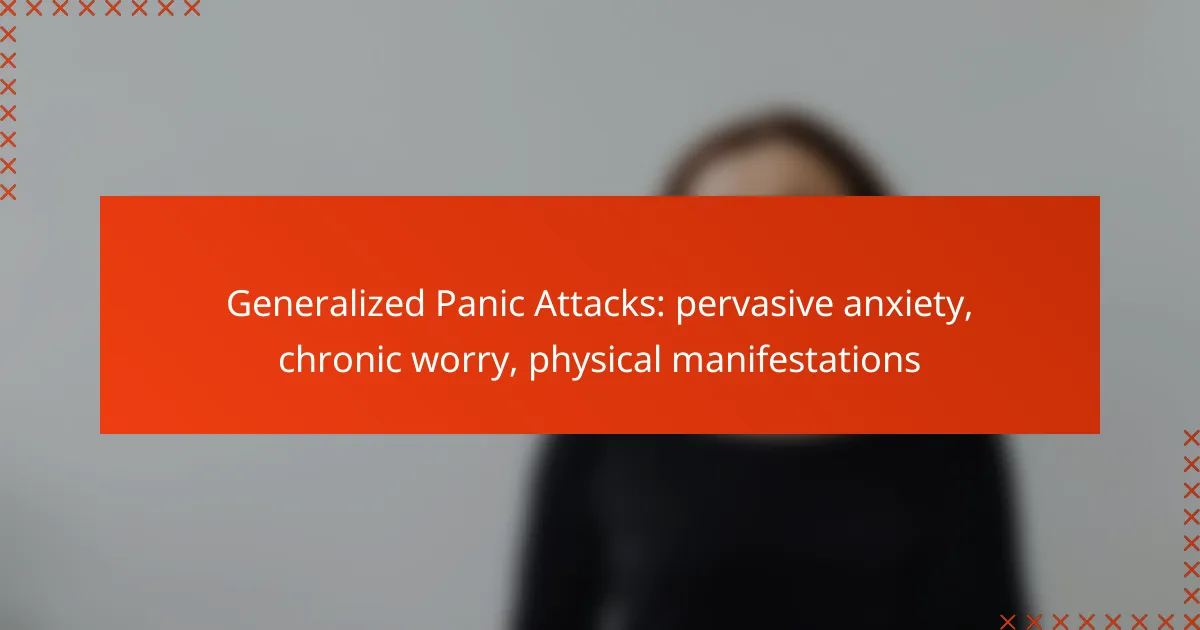Substance-induced panic attacks can occur as a direct result of drug use, withdrawal symptoms, or environmental triggers. These episodes often manifest as intense feelings of fear or anxiety, significantly impacting an individual’s daily life. Understanding the interplay between substance use and panic is essential for effective treatment and management.

What are the causes of substance-induced panic attacks?
Panic attacks can be triggered by various substances, including drugs and alcohol, as well as by withdrawal from these substances. Understanding the causes helps in managing and preventing these distressing episodes.
Drug use and abuse
Substance use, particularly stimulants like cocaine and amphetamines, can lead to panic attacks. These drugs increase heart rate and stimulate the nervous system, which may precipitate feelings of anxiety and panic. Alcohol and sedatives can also cause panic attacks, especially when used in excess or in combination with other substances.
It’s crucial to recognize that the risk of panic attacks can vary based on the type of drug, dosage, and individual susceptibility. Users should be aware of their limits and the potential for adverse reactions, especially in unfamiliar environments.
Withdrawal symptoms
Withdrawal from certain substances, such as alcohol, benzodiazepines, or opioids, can lead to panic attacks as the body reacts to the absence of the drug. Symptoms may include increased anxiety, restlessness, and physical discomfort, all of which can trigger panic episodes.
Managing withdrawal symptoms is essential for preventing panic attacks. Gradual tapering of substances under medical supervision can reduce the severity of withdrawal and associated anxiety, making the process safer and more manageable.
Environmental stressors
Environmental factors, such as high-stress situations or traumatic experiences, can exacerbate the likelihood of panic attacks in individuals using substances. Stressful environments may heighten anxiety levels, particularly for those already vulnerable due to substance use.
To mitigate these risks, individuals should aim to create supportive environments and avoid high-stress situations when possible. Practicing relaxation techniques, such as deep breathing or mindfulness, can also help manage anxiety and reduce the chances of panic attacks in challenging settings.

How can substance-induced panic attacks be treated?
Treatment for substance-induced panic attacks typically involves a combination of therapy, medication, and support systems. Addressing the underlying causes, such as drug use or withdrawal symptoms, is crucial for effective management.
Cognitive Behavioral Therapy (CBT)
Cognitive Behavioral Therapy (CBT) is a structured, time-limited approach that helps individuals identify and change negative thought patterns associated with panic attacks. By focusing on the relationship between thoughts, feelings, and behaviors, CBT equips patients with coping strategies to manage anxiety and reduce panic symptoms.
Sessions often include exposure techniques, where individuals gradually face situations that trigger panic, allowing them to build resilience. Regular practice of these techniques can lead to significant improvements in managing panic attacks over time.
Medication options
Medication can be an effective part of treatment for substance-induced panic attacks, particularly during acute episodes. Common options include selective serotonin reuptake inhibitors (SSRIs) and benzodiazepines, which can help alleviate anxiety and panic symptoms.
It is essential to consult a healthcare professional to determine the most suitable medication based on individual needs and potential side effects. Gradual tapering of medication may be necessary to avoid withdrawal symptoms, especially if the panic attacks are linked to substance use.
Support groups in the UK
Support groups in the UK provide a valuable resource for individuals experiencing substance-induced panic attacks. These groups offer a safe environment to share experiences and coping strategies with others facing similar challenges.
Organizations such as Alcoholics Anonymous (AA) and Narcotics Anonymous (NA) have local chapters throughout the UK, where members can find community support. Additionally, mental health charities often host peer support groups that focus on anxiety and panic disorders, helping individuals feel less isolated in their recovery journey.

What are the symptoms of substance-induced panic attacks?
Panic attacks induced by substance use can manifest through a variety of symptoms that affect both the body and emotions. These symptoms may arise during active use, withdrawal, or even in response to environmental triggers related to substance exposure.
Physical symptoms
Physical symptoms of substance-induced panic attacks can include rapid heartbeat, shortness of breath, sweating, and trembling. Individuals may also experience dizziness, nausea, or a feeling of choking. These symptoms can be alarming and may mimic those of a heart attack, leading to increased anxiety.
It’s essential to recognize that these physical reactions can vary depending on the substance involved. For example, stimulants like cocaine or amphetamines may lead to heightened heart rates, while depressants such as alcohol can cause a sense of heaviness or lethargy. Understanding these differences can help individuals identify the source of their panic.
Emotional symptoms
Emotional symptoms often accompany the physical manifestations of panic attacks and can include intense feelings of fear, dread, or impending doom. Individuals may feel detached from reality or experience a sense of unreality, known as derealization. These emotional responses can be exacerbated by the context in which the substance is used or withdrawn.
It’s crucial to address these emotional symptoms promptly, as they can lead to avoidance behaviors and further substance use. Seeking support from mental health professionals can provide effective coping strategies and reduce the impact of these emotional disturbances.

How does drug withdrawal contribute to panic attacks?
Drug withdrawal can significantly contribute to panic attacks by inducing a range of physical and psychological symptoms. As the body adjusts to the absence of a substance, it may trigger heightened anxiety and panic responses, making individuals more susceptible to panic attacks.
Common withdrawal symptoms
Common withdrawal symptoms can include anxiety, irritability, tremors, and rapid heartbeat. These symptoms often create a feedback loop, where the physical sensations of withdrawal can provoke feelings of panic, leading to further anxiety and distress.
Additionally, some individuals may experience changes in sleep patterns, appetite, or concentration, which can exacerbate feelings of unease and contribute to panic attacks. Recognizing these symptoms early can help in managing them effectively.
Duration of withdrawal effects
The duration of withdrawal effects varies depending on the substance used and the individual’s physiology. Generally, acute withdrawal symptoms may last from a few days to several weeks, while psychological effects like anxiety can persist for months.
For instance, alcohol withdrawal symptoms can peak within 24 to 72 hours and may last up to a week, whereas withdrawal from opioids may lead to symptoms that can last several weeks. Understanding the timeline of withdrawal can aid in seeking appropriate support and treatment.

What role do environmental factors play in panic attacks?
Environmental factors can significantly influence the onset of panic attacks by creating stressors that trigger anxiety. Elements such as noise, crowd density, and unfamiliar settings can heighten feelings of panic, especially for those predisposed to anxiety disorders.
Triggers in urban settings
Urban environments often present unique triggers for panic attacks, including high population density, loud noises, and fast-paced lifestyles. These factors can overwhelm individuals, leading to increased anxiety and potential panic episodes. For example, navigating crowded public transport can provoke feelings of claustrophobia and distress.
To manage these triggers, individuals can practice grounding techniques, such as focusing on their breathing or identifying nearby objects to create a sense of safety. It may also help to plan routes during less busy times to minimize exposure to overwhelming situations.
Impact of social situations
Social situations can exacerbate anxiety and lead to panic attacks, particularly in unfamiliar or large gatherings. Fear of judgment or embarrassment can intensify feelings of panic, making it challenging to engage with others. For instance, attending a party where one does not know many people can trigger significant anxiety.
To cope with social anxiety, individuals can prepare by setting small, achievable goals, such as initiating conversation with one person or staying for a limited time. Practicing relaxation techniques beforehand can also help reduce anxiety levels and improve comfort in social settings.

How can lifestyle changes help manage panic attacks?
Lifestyle changes can significantly help manage panic attacks by promoting overall well-being and reducing triggers. Incorporating healthy habits can lead to decreased anxiety levels and improved emotional resilience.
Exercise and physical activity
Regular exercise is a powerful tool for managing panic attacks. Engaging in physical activity releases endorphins, which can enhance mood and reduce stress. Aim for at least 150 minutes of moderate aerobic activity each week, such as brisk walking or cycling.
Consider incorporating strength training exercises twice a week, as they can also contribute to mental health benefits. Activities like yoga or tai chi combine physical movement with mindfulness, further aiding in anxiety reduction.
Mindfulness and relaxation techniques
Mindfulness practices, such as meditation and deep breathing, can effectively lower anxiety and help manage panic attacks. Setting aside just a few minutes each day for mindfulness can create a sense of calm and improve emotional regulation.
Techniques like progressive muscle relaxation or guided imagery can also be beneficial. Start with short sessions and gradually increase the duration as you become more comfortable. Consistency is key, so try to incorporate these practices into your daily routine.

What are the long-term effects of substance-induced panic attacks?
Substance-induced panic attacks can lead to various long-term effects, including persistent anxiety, changes in mood, and ongoing panic episodes. These effects often stem from the psychological and physiological changes caused by drug use, withdrawal symptoms, and environmental triggers.
Drug use and its impact
The use of substances such as stimulants, alcohol, and hallucinogens can significantly increase the likelihood of experiencing panic attacks. These drugs can alter brain chemistry, leading to heightened anxiety and panic responses. Long-term use may result in a dependency that exacerbates these symptoms even after cessation.
For example, stimulants like cocaine or methamphetamine can create a cycle of anxiety and panic, as users may experience withdrawal symptoms that mimic panic attacks. This can lead to a reliance on the substance to avoid these distressing feelings, creating a challenging situation for recovery.
Withdrawal symptoms
Withdrawal from certain substances can trigger panic attacks and anxiety, which may persist long after the substance has left the system. Symptoms can include increased heart rate, sweating, and feelings of dread, all of which can contribute to a cycle of panic. The severity and duration of these withdrawal symptoms can vary based on the substance and the individual’s history.
For instance, individuals withdrawing from alcohol may experience severe anxiety and panic attacks for weeks, while those quitting stimulants might face shorter but intense episodes. Understanding these withdrawal timelines can help in managing expectations during recovery.
Environmental factors
Environmental factors can play a crucial role in the occurrence of substance-induced panic attacks. Stressful situations, such as high-pressure work environments or personal crises, can trigger or worsen anxiety and panic symptoms. Additionally, being in environments associated with past substance use can provoke panic attacks.
Creating a supportive environment is essential for recovery. This may include avoiding places or situations that trigger memories of substance use and seeking supportive relationships. Engaging in stress-reduction techniques, such as mindfulness or therapy, can also mitigate the impact of environmental stressors on panic symptoms.



